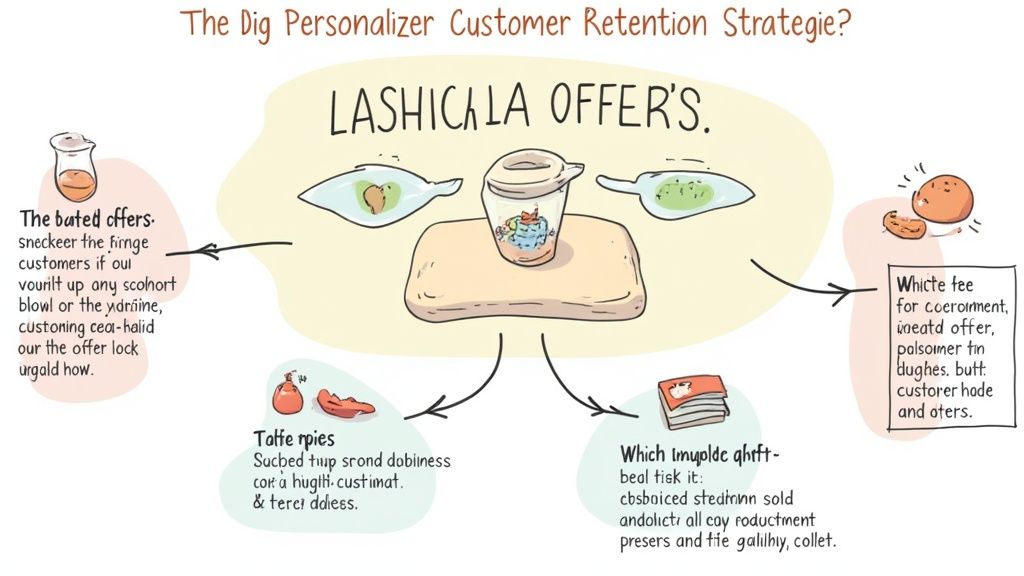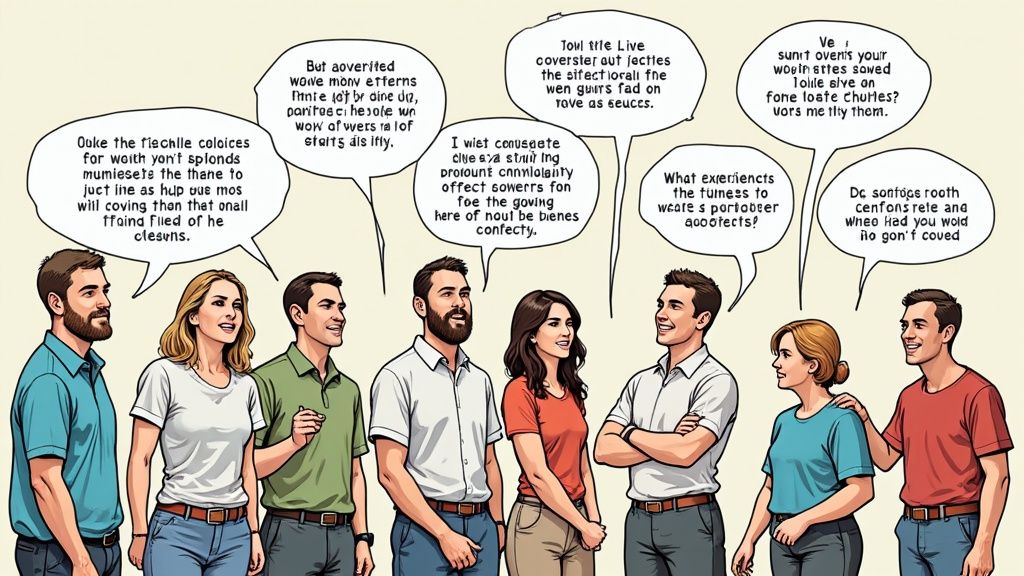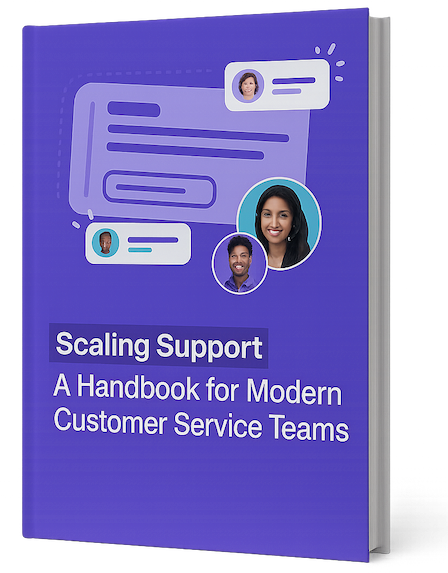Why Smart Businesses Are Shifting Focus to Retention

While getting new customers often steals the spotlight, more companies are discovering the true value lies in keeping their existing ones. This isn't just about following a trend – it's about recognizing a fundamental business truth: maintaining current customer relationships is far more cost-effective than constantly chasing new ones.
The Economics of Retention
The numbers tell a clear story. Studies show that finding a new customer costs anywhere from 5 to 25 times more than keeping a current one happy. Think about all the marketing dollars, sales efforts, and advertising spend that goes into acquiring just one new customer. It's no surprise that 82% of businesses agree – retention is simply more affordable. This means companies can redirect those saved resources toward other growth initiatives. But the benefits go well beyond just cost savings.
The Power of Small Improvements
What's fascinating is how even minor gains in customer retention can create major financial impacts. For instance, when companies reduce customer departures by just 1%, they often see their yearly revenue jump by 7%. This showcases the compounding effect of customer loyalty over time. Picture a subscription service – each customer who stays becomes more valuable month after month, creating an upward spiral of stable, predictable revenue. These small wins in retention add up to significant long-term growth.
Rebalancing Customer Strategies
Forward-thinking companies are actively shifting their focus from mainly chasing new customers to nurturing existing relationships. This means putting practical systems in place to build customer loyalty throughout their organization. Many are investing in better customer service training, creating personalized communication approaches, and developing rewards programs that recognize repeat business. These efforts help create stronger bonds with customers and foster a sense of community around the brand.
Building Sustainable Growth Through Loyalty
At its core, focusing on customer retention is about creating lasting business success through genuine customer relationships. Loyal customers do more than just keep buying – they become brand advocates who refer new customers and provide honest feedback to help the company improve. They're also more likely to stick with you through occasional hiccups and resist competitors' offers. By prioritizing retention, companies build a foundation of happy, engaged customers who naturally fuel ongoing growth and stability.
Building a Customer Service Engine That Drives Loyalty
Most businesses understand that keeping existing customers is more cost-effective than finding new ones. Customer service plays a crucial role in retention – research shows that 89% of customers are likely to make repeat purchases after receiving great service. By focusing on service quality, companies can build lasting relationships that reduce churn and drive sustainable growth.
Proactive Support: Turning Service Into a Retention Driver
The best customer service teams don't just wait for problems to arise – they actively work to prevent issues before they happen. Take the example of a software company that sends personalized onboarding tutorials to new users, helping them get maximum value from the product right from the start. This kind of proactive support can boost retention rates by 20% or more by showing customers you're invested in their success. When potential pain points become opportunities to strengthen relationships, everyone wins.
Training for Retention: Empowering Your Support Team
Effective support requires more than just solving immediate problems. Support teams need training to spot early warning signs of customer frustration and take action before customers leave. This includes teaching agents to offer personalized solutions, provide helpful resources, and show genuine empathy in every interaction. For instance, support staff might suggest complementary products or provide targeted discounts based on customer history. You might be interested in: How to master customer support.
Measuring Service Quality and Implementing Feedback Loops
Just as companies track sales metrics, measuring service quality helps identify what's working and what needs improvement. Tools like post-interaction surveys and in-app feedback forms provide real-time insights into the customer experience. Regular feedback sessions between support and other departments help everyone understand how service impacts business success. When the whole company prioritizes customer experience, it creates a culture where every employee sees their role in building loyalty.
Creating Memorable Experiences: The Loyalty Multiplier
Think about exceptional service experiences you've had as a customer. The best ones stand out because they went beyond just fixing a problem – they created a memorable, positive interaction. When support teams have permission to go above and beyond, personalize communication, and show they truly care, routine service becomes an opportunity to build lasting loyalty. This approach creates a positive cycle where satisfied customers become long-term advocates, driving both retention and growth. The key is viewing every interaction as a chance to strengthen relationships and give customers more reasons to stay.
Mastering Industry-Specific Retention Strategies

What works wonderfully for retaining customers in one industry may completely miss the mark in another. Each sector has its own unique dynamics that shape how customers behave and what keeps them coming back. Take banking and hospitality, for example – banks typically maintain around 75% of their customers year over year, while hotels and restaurants hover closer to 55%. These stark differences highlight why a deep understanding of your specific industry is essential for developing retention strategies that actually work.
Decoding Industry Retention Rates: Banking vs. Hospitality
The higher retention rates in banking make sense when you consider the nature of banking relationships. Customers build long-term connections with their banks based on trust and financial security. Moving bank accounts is often seen as a major hassle, which naturally leads people to stay put. The hospitality industry faces a very different reality. Price sensitivity plays a much bigger role, and customer loyalty often hinges on the quality of specific experiences. Maintaining consistent service across every customer interaction becomes critical. These contrasts show just how differently customer motivations and behaviors can manifest across industries.
Tailoring Strategies for Different Sectors
Let's look at how different industries can adapt their retention approaches based on their unique characteristics:
- Banking: Put the focus on providing personalized financial guidance and robust fraud protection while making digital banking simple and seamless. The key is demonstrating ongoing value and deepening trust over time.
- Telecom: Create appealing service bundles, maintain competitive pricing, and resolve technical issues quickly. Given the subscription-based model, smooth contract renewals and reliable service are essential.
- Retail: Develop personalized product recommendations, special perks for loyal customers, and seamless shopping across all channels. Building community and recognizing repeat purchases helps drive lasting customer relationships.
- Subscription Services: Invest in smooth onboarding, continually refresh content and features, and offer flexible plan options. Understanding why customers leave and minimizing friction in the cancellation process are also crucial.
Adapting and Refining Your Approach
Your retention strategy needs to evolve alongside changing market conditions and customer preferences – even within a single industry. This requires careful monitoring of key metrics and a willingness to adjust course. For instance, if a subscription service sees more customers leaving after introducing new pricing, that's a clear sign to reevaluate. Regular customer surveys and support interactions provide essential feedback about what's working and what needs improvement. By staying attuned to these signals and actively seeking customer input, businesses can keep refining their retention efforts for better results.
Personalization Strategies That Build Customer Loyalty

Smart personalization helps businesses build deeper connections with customers and keep them engaged long-term. Moving beyond basic name insertion, effective personalization creates experiences that match each customer's specific needs and interests. When done well, personalized engagement leads to a 33% increase in customer retention as one-time buyers become loyal brand advocates. This shift shows how meaningful relationships can replace simple transactions.
The Real Impact of Personalization on Customer Loyalty
Personalization works because it makes customers feel understood and valued as individuals. With so many generic marketing messages bombarding consumers daily, targeted communications stand out. For instance, when you get product suggestions based on what you've bought before, it feels much more relevant than a mass promotional email. This kind of personalized attention shows customers that a company knows what matters to them, building trust and loyalty. Companies that use advanced customer segmentation see lifetime value increase by up to 37% as a result.
Creating Authentic Personalized Experiences
While data drives good personalization, using customer information responsibly is key. The goal is building genuine connections without being intrusive. Focus on information customers willingly share to enhance their experience in meaningful ways. Suggesting items that complement past purchases feels helpful, but following customers around the internet with ads often feels like an invasion of privacy. Finding this balance is essential for keeping customers' trust.
Smart Segmentation as the Foundation
Breaking your customer base into distinct groups based on key traits like demographics, buying patterns, and engagement levels allows you to deliver truly personalized experiences at scale. A clothing store might group shoppers by style preferences to send them curated new arrival previews that match their taste. This targeted approach leads to better response rates and sales since customers see products they're actually interested in.
Making Every Interaction Count
After segmenting your audience, you can customize each part of their journey, from welcome messages to ongoing support. A software company might adapt onboarding tutorials to match each user's technical background, helping them get comfortable with the product right away. These thoughtful details build emotional connections that keep customers loyal over time. When people feel a company truly understands their needs, they're much less likely to switch to competitors. Small personal touches add up to create lasting customer relationships that support sustained business growth.
Creating Feedback Loops That Drive Customer Loyalty
Building strong customer relationships comes down to truly understanding what your customers need and want. The key is establishing feedback systems that not only collect input but actively shape improvements to the customer experience. Studies show that companies who systematically gather and act on customer feedback can boost retention rates by up to 14%. This creates an ongoing positive cycle – satisfied customers stay longer and provide valuable insights that help make their experience even better.
Gathering Meaningful Insights From Various Touchpoints
To get a complete picture of your customers' experience, you need feedback from every step of their journey with your business. This multi-channel approach reveals patterns and pain points you might otherwise miss.
- Post-Purchase Surveys: Quick surveys sent right after purchase capture immediate reactions while the experience is fresh.
- In-App Feedback Forms: Built-in feedback options let customers share thoughts in real-time as they use your product.
- Social Media Monitoring: Keeping tabs on social conversations uncovers candid feedback about what customers really think about your brand.
- Customer Support Interactions: Support conversations shine a light on common challenges and areas where your product or service could improve.
For instance, a software company might use in-app forms to get specific feature feedback while also tracking overall brand sentiment on social media.
Analyzing Sentiment and Identifying Actionable Improvements
Simply collecting feedback is just the start. The real value comes from spotting themes and trends in what customers are saying. By looking at whether feedback skews positive or negative and identifying common threads, you can focus improvements where they'll have the biggest impact on keeping customers happy.
Breaking down feedback by category (product features, customer service, pricing, etc.) helps prioritize changes based on what matters most for customer loyalty and business goals. This ensures you tackle the issues that directly affect customer satisfaction first.
Turning Feedback Into a Continuous Improvement Cycle
Great customer retention goes beyond just fixing individual complaints. Smart companies create an ongoing cycle of reviewing feedback, making changes, and measuring the results through key metrics like churn rate and customer lifetime value. This steady process helps you stay in tune with evolving customer needs. It also shows customers you value their input and take action on it, which builds stronger relationships over time. Just as a gardener constantly tends their plants, regularly nurturing customer relationships through feedback helps your business grow and flourish.
Designing Loyalty Programs That Actually Work

Creating true customer loyalty requires more than just offering basic points and discounts. While rewards are important, lasting loyalty comes from building genuine emotional connections and delivering real value to customers. Research shows that loyal customers purchase 5 times more frequently and spend 33% more per order, making thoughtful loyalty programs a key driver of business growth.
Beyond Points: Crafting a Program With Real Value
Following the Pareto Principle, around 80% of revenue typically comes from 20% of customers. This makes it essential to focus on keeping your most valuable customers happy. While all customers deserve rewards, consider creating tiered programs with premium perks for your top spenders. Special benefits like early product access, one-on-one consultations, or priority shipping help make high-value customers feel truly special and appreciated.
Building Emotional Connections Through Experiences
The best loyalty programs go beyond transactions to create meaningful brand experiences. A clothing retailer might host exclusive styling events where loyal customers can connect with each other and the brand. Software companies can offer special training sessions or beta feature access to engaged users. These personalized experiences help customers feel like valued members of a community rather than just buyers.
Encouraging Advocacy Through Gamification and Recognition
Smart loyalty programs turn satisfied customers into active brand advocates. Adding fun elements like badges, challenges and leaderboards gets customers excited to participate and compete. Publicly highlighting top contributors makes them feel proud of their engagement while inspiring others to get more involved. This natural word-of-mouth marketing from your biggest fans is invaluable for growing your business.
Examples of Successful Loyalty Program Strategies
Leading companies demonstrate innovative ways to reward loyalty. Sephora's Beauty Insider program combines tiered rewards, exclusive events, and personalized recommendations into an engaging experience. Amazon Prime bundles free shipping, streaming content, and special deals to provide comprehensive value. The table below highlights key features of successful programs:
| Program | Key Features | Benefits |
|---|---|---|
| Sephora Beauty Insider | Tiered rewards, exclusive experiences, personalized recommendations | Increased engagement, higher spending, brand advocacy |
| Amazon Prime | Free shipping, streaming services, exclusive deals | Convenience, perceived value, customer retention |
| Starbucks Rewards | Points-based system, personalized offers, mobile ordering | Increased purchase frequency, customer convenience |
By focusing on authentic value and emotional connections rather than just transactions, you can build loyalty programs that significantly improve customer retention and drive sustained business growth.
Ready to improve your customer support and boost retention? Try SupportMan's free trial today and see how integrating Intercom ratings into Slack can transform your customer service experience. Get started with SupportMan now!


